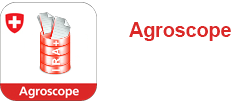Agriculture is a major contributor to greenhouse gas (GHG) emissions. Farm-level GHG accounting tools are used to identify mitigation measures and to monitor, report and verify (MRV) GHG profiles and emission reductions. Here we explore opportunities and limitations of farm-level GHG accounting tools based on a global survey covering the practical application of 23 tools used in 30 projects assessing approximately 40′000 farms, and an extensive literature review. We found that most tools are used by experienced scientists in a consultancy context, often associated with a research program. Most tools are of medium complexity and apply “cradle to farm gate” system boundaries. However, we found considerable heterogeneity in scope and methods, particularly for soil carbon fluxes. Furthermore, the necessity to consider consequential system interactions beyond the farm gate is recognized by most users. Results show that due to complexity and numerous methodological uncertainties, the assessment and interpretation of farm-level emission profiles is time-consuming and requires sophisticated tools and great expertise. Decision-making should be based on a set of indicators, thoroughly considering the goal and context of a project. Even then, a fair benchmarking and compensation system is challenging. Accordingly, accounting tools are rarely used for result-based reward mechanisms suggesting that their relevance for compensation mechanisms or emission trading is limited. Their strength lies more in awareness-raising and consultancy for mitigation actions. However, the estimated potentials at farm level of, on average 10–20 % GHG reduction, and the challenges associated with their MRV indicate that a purely technical approach at the farm level is currently insufficient to achieve the necessary GHG reductions. Our results thus point to the need for further capacity development and structural adjustments at a higher level in the agri-food system.










